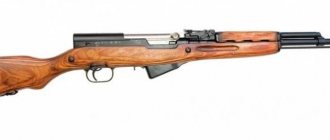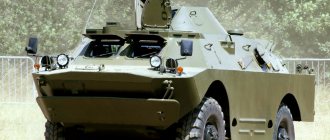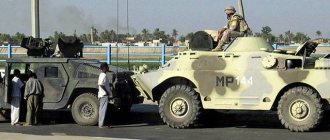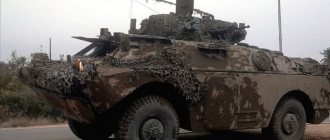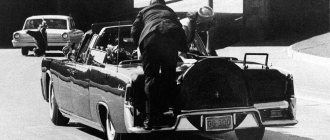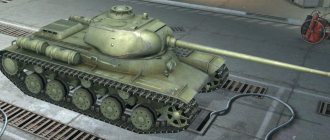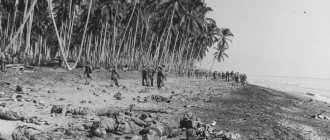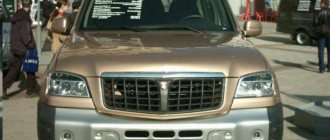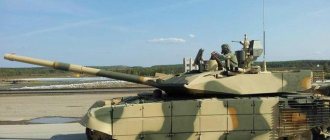BRDM-2 TTX, Video, Photo, Speed, Armor
BRDM-2 (Armored Reconnaissance and Patrol Vehicle-2) is a further development of the BRDM-1. Serially produced from 1963 to 1982 by the Gorky Automobile Plant and from 1982 to 1989 by the Arzamas Machine-Building Plant (as well as under license in Poland, Czechoslovakia and Yugoslavia). BRDM-2 has low security; the armor protects against small arms bullets and shrapnel.
Difference between the new model and the basic version
Wheeled all-terrain vehicles of two generations differed in technical characteristics. BRDM-2 had a number of advantages over its predecessor:
- Improved ride quality.
- Enhanced combat capabilities.
- High degree of security.
- There was anti-nuclear protection.
- The engine was installed at the rear, which improved cross-country ability over water obstacles.
- To work with information (receive it, transmit it) a radio communication system was used.
The new BRDM-2 model had these characteristics. The photo will indicate the changes that affected the appearance of the car. The armored hulls were ready by mid-1960. But new elements of the chassis and transmission had not yet been manufactured. Therefore, they had to be taken the same as in the previous version. Military all-terrain vehicles entered testing in this configuration. But this led to a lot of negative reviews.
BRDM-2 - video
The main feature of the vehicle is its very high cross-country ability. In addition to the main all-wheel drive chassis with adjustable tire pressure, in the middle part of the body there are special additional retractable wheels, which allow, in particular, to overcome significant ditches and trenches. Currently used in varying degrees by the intelligence units of more than 50 countries. In the troops he has the nickname “Bardak”. In the USSR, production was completed in November 1989. Production continues under license in Poland.
History of creation
The combat reconnaissance and patrol vehicle was developed at the design bureau of the Gorky Automobile Plant. The work was supervised by V. A. Dedkov. On May 22, 1962, the vehicle was put into service. Serial production of the vehicle was organized in 1963 at GAZ, and from 1982 at the Arzamas Machine-Building Plant and continued until 1989.
BRDM-2 (GAZ-41-06) - basic model. Produced since 1963
BRDM-2 "Fox" (GAZ-41-10) - basic model. Produced since 1967. With automatic ESD and additional night vision devices
BRDM-2A - modernized
Use in armed conflicts
- The invasion of Czechoslovakia in August 1968.
- Yom Kippur War in October 1973. During it, Egyptian troops, having at their disposal BRDM-2 armored vehicles equipped with anti-tank defense systems, managed to repulse the attack and defeat the Israeli tank division near the Suez Canal. In total, more than 150 tanks were burned. During this operation, the Israelis suffered heavy combat losses. The use of armored vehicles with anti-tank missiles on board fully met all expectations.
- The armored vehicle was widely used in the war in Afghanistan. The USSR troops often used it as a convenient vehicle in off-road mountain conditions and dry and hot climates.
- Was seen in the Chechen campaign. Actively used by both sides of the conflict. Increased survivability and ease of operation made it an indispensable combat vehicle.
- During the conflict in South Ossetia. Also used by all parties. On the Russian side, only three combat units were lost.
- According to unverified data, during the coup in Russia called “Black October”. During this conflict, the current government was overthrown and presidential rule was established.
Design
The BRDM-2 has a layout with the control compartment located in the front, the fighting compartment in the middle, and the engine compartment in the rear of the vehicle. The crew of the BRDM consists of four people: the commander and driver, located in the control compartment on the right and left, respectively, the gunner, located in the turret, and the observer, occupying a place on the left or right side in the fighting compartment.
Armored hull and turret
Department of Management
The control compartment is located in the bow of the hull. The control compartment houses the machine controls, as well as the following equipment:
— Seats for commander and driver; — Instrumentation; — Radio station; — Observation devices.
The seats have a position adjustment system. In the niche of the right front wheel there is a bracket for the DP-3B radiometer. The remote unit of the device is fixed in the housing on the front bottom sheet.
In the event of a roadside landmine being detonated at least a short distance from the BRDM, unlike the American HUMVI, it did not receive any particular damage, unless, of course, half a ton of explosives were buried in the ground - well, then the tank would “fly”... not what a light armored vehicle. The truth is that when it comes to comfort... yes, the Humvee and the BRDM-2 cannot be compared. But it’s better to be hot and uncomfortable than cozy and then cold, but for good.
Combat compartment
The fighting compartment is located in the middle part of the vehicle. In order to access the power plant from inside the vehicle, there is a partition in the rear part of the fighting compartment in which special hatches are installed.
The fighting compartment has two seats for the vehicle's crew. A shoulder strap is installed on the roof, on which the vehicle's turret is located. The turret has a hanging seat to accommodate the shooter. In the center of the floor there is a sealed casing, under which the transfer case is located. In addition, there is a special niche in the floor for placing tools. The niche is closed with a hinged lid.
BRDM-2 overcomes a water obstacle
Power plant department
The power unit compartment is located at the rear of the housing. The power plant compartment houses:
— Drive for manual engine start; - Engine; — Fuel tank for starting heater; — Generating unit; — Filter-ventilation unit; - Transmission; — Air cylinders; — Water and oil radiators; - Accumulator battery; — Water and oil heat exchangers; — Cardan drive of the water-jet propulsion; — Compressor; — Evacuation valve; — Starting heater; — Electric water pump.
The water jet propulsion unit is installed in the rear of the vehicle. Water is taken from under the bottom. The propellers are equipped with propellers with a diameter of 500 mm. The tractive force at 900..1100 rpm of the propeller is 700 kgf. The propulsion unit is driven by a special power take-off mounted on the left side of the gearbox.
Armament
The BRDM-2 is armed with a twin mount of a 14.5 mm KPVT machine gun and a 7.62 mm PKT. The installation is placed on trunnions in the front part of the turret, its guidance in the vertical plane, within the range of −5...+30°, is carried out manually using a screw mechanism, horizontal guidance is carried out by rotating the turret. The machine guns are aimed at the target using a PP-61 or PP-61AM periscopic optical sight, which has a magnification of 2.6× with a field of view of 23° and provides fire from the KPVT at a range of up to 2000 meters and from the PKT - up to 1500 meters. The KPVT is designed to combat lightly armored and unarmored enemy vehicles and has an ammunition load of 500 rounds in 10 belts, equipped with B-32 armor-piercing incendiary bullets and BZT tracer or armor-piercing incendiary bullets with a tungsten carbide core, BS-41 bullets and BST tracer, and also an incendiary ZP. The Kalashnikov machine gun is designed to destroy enemy personnel and firepower and has an ammunition load of 2000 rounds of ammunition in 8 belts.
BRDM-2 with lowered additional wheels overcomes a trench
Surveillance and communications equipment
As a reconnaissance vehicle, the BRDM-2 has a developed set of surveillance equipment. The commander of the vehicle has a binocular periscope tank panorama TPKU-2B, which provided 5× magnification with a field of view of 7.5°, which allowed observation at a range of up to 3,000 meters, and provided all-round visibility. At night, at the TPKU-2B site, a TKN-1S monocular night vision device was installed, which had a magnification of 2.75× and a field of view of 10° and provided observation at a distance of up to 250-300 meters when illuminated by an OU-3 infrared illuminator. In addition to them, the commander has four fixed periscopic devices: one TNPO-115 and three TPN-B, providing visibility into the frontal and starboard sectors. The driver has six periscope viewing devices: two TNPO-115 and four TPN-B, providing visibility into the frontal and left side sectors. At night, the central device TNPO-115 is replaced by a binocular fixed night vision device TVNO-2B, which provided observation in a 30° sector at a distance of 50-60 meters [9]. In non-combat conditions, the commander and driver could conduct observation through inspection hatches in the front hull. The observer at each of his places had three TPN-B periscopic devices, which provided an overview of the corresponding onboard sector. TPN-B and TNPO-115 had a one-time magnification and were distinguished by the presence of electric heating in the latter, which improved visibility through them at low temperatures. The turret gunner, in addition to the machine gun sight, which he used as the main means of observation, had a TNPT-1 periscope device, installed in the roof of the turret and providing observation of the aft sector at 52°.
To overcome trenches and trenches, the BRDM-2 is equipped with two pneumatic wheels on each side. The wheel size is 700×250 mm. Before overcoming obstacles, the wheels are lowered, and after overcoming, they are raised using four hydraulic lifts with a ball lock. The wheels, like the main ones, are driving. They are driven by a power take-off through chain drives.
Engine and transmission
The BRDM-2 is equipped with an eight-cylinder V-shaped four-stroke gasoline engine GAZ-41, similar to the engines installed on the Chaika GAZ-13 and GAZ-14 cars. Engine power is 140 hp. With. The engine uses a combined lubrication system (pressure and splash). The oil pump is a two-section gear type. A jet-driven centrifugal oil filter is also used. The total capacity of fuel tanks is 280 liters.
The transmission is mechanical. Has 4 forward and one reverse gears. The clutch is single-disc, damper, with an outer diameter of the driven disc of 300 mm.
BRDM-2, additional wheels raised into a niche, chain drive visible
Chassis
The chassis is wheeled. The camber angle of the wheels is 0°45′. Car tires of 12.00-18" with central pressure regulation are installed, similar to the tires of GAZ-63, GAZ-66 and ZIL-157 cars. Spring suspension with longitudinal semi-elliptical springs. The ends of the springs are installed in rubber cushions. Each axle has two double-acting telescopic hydraulic shock absorbers.
To overcome trenches and trenches, the BRDM-2 is equipped with two pneumatic wheels on each side. The wheel size is 700×250 mm. Before overcoming obstacles, the wheels are lowered, and after overcoming, they are raised using four hydraulic lifts with a ball lock. The wheels, like the main ones, are driving. They are driven by a power take-off through chain drives.
The water jet propulsion unit is installed in the rear of the vehicle. Water is taken from under the bottom. The propellers are equipped with propellers with a diameter of 500 mm. The thrust force at 900-1100 rpm of the propeller is 700 kgf. The propulsion unit is driven by a special power take-off mounted on the left side of the gearbox.
Modifications
BRDM-2M(A) - a modernized version of the BRDM-2. Manufacturer: Arzamas Machine-Building Plant. The vehicle has been lightened - the side wheel mechanisms for increasing cross-country ability have been removed, and trapezoidal doors from the BTR-70 have appeared instead. The suspension is unified with the BTR-80. Instead of a gasoline engine, a D-245.9 turbodiesel engine with a power of 136 hp is installed. s.. The BRDM is equipped with a BPU-1 turret, armed with a 14.5 mm KPVT machine gun and a 7.62 mm PKT machine gun (the KPVT firing angle is increased to +60°) and is equipped with modern R-163 or R-173 radio stations.
BRDM-2LD - Ukrainian modernization of the BRDM-2 (with side landing hatches and a Ukrainian-made SMD-21-08 diesel engine), produced by the Nikolaev Mechanical Repair Plant State Enterprise. Production discontinued due to bankruptcy (manufacturer of SMD series engines)
BRDM-2M - Ukrainian modernization of BRDM-2. Same as BRDM-2LD, but with a standard gasoline engine. Produced by the State Enterprise "Nikolaev Mechanical Repair Plant".
BRDM-2DI “Khazar” is a Ukrainian modernization of BRDM-2, developed in 2005 at the Nikolaev Mechanical Repair Plant. The side landing doors of the BRDM-2LD and BRDM-2M type were retained, an FPT IVECO Tector diesel engine with a pre-heater, a thermal imager and a new weapons system were installed.
BRDM-2DP is a Ukrainian modernization of the BRDM-2, developed by Mayak Plant OJSC. Lightweight modification (the turret and side wheel mechanisms for increasing maneuverability were removed), a side door for landing was equipped, a diesel engine and a device for overcoming trenches and trenches were installed, the armament was changed (a 12.7 mm DShKM bow machine gun and 2 onboard 7.62 mm machine guns were installed SGMB machine gun). The machine can also be equipped with removable anti-cumulative nets.
BRDM-2 diagram
1 — wave-reflective shield; 2 — towing eye; 3 — lighting headlights; 4 — navigation equipment coordinator; 5 — illuminator; 6 — viewing devices; 7 — embrasure for shooting; 8 — installation of machine guns; 9 — supercharger-separator; 10 - air compressor; 11 — water radiator; 12 - water cannon; 13 - heat exchanger; 14 — shock absorber; 15 — power plant; 16 — additional wheels; 17 — transfer case; 18 — ammunition rack; 19 - radio station; 20 - winch
BRDM-2I is a Ukrainian modernization of BRDM-2, proposed by the 45th Experimental Mechanical Plant (Vinnitsa). The standard gasoline engine was replaced with a low-noise ISUZU diesel engine with a power of 156 hp. The water-jet installation and anti-trench wheels were retained during the modernization. Additionally, an electronic centralized tire inflation system made in Ukraine was installed.
BRDM-2T - Ukrainian modernization of BRDM-2, developed (Kyiv).
BRDM-2 "VEPR" - Ukrainian modernization of the BRDM-2, proposed by. Visibility has been improved by glazing the cockpit with armored glass. The bottom is armored. The side wheels have been removed. Instead, full-profile doors for landing and landing troops were installed. Armament has been strengthened. In addition to the standard armament, a stern machine gun was added; the machine gunner's position was equipped in place of the dismantled water-jet propulsion unit. In the bow there is provision for installation of a course automatic grenade launcher. Lighting equipment has been modified for traffic on public roads[26].
BRDM-2MB1 is a Belarusian modernization of BRDM-2, produced by JSC 140 Repair Plant since 2011. Water-jet propulsors and additional wheels were dismantled. Installed side landing hatches, radio station R-173, new diesel engine D245.30E2 with a power of 155 hp. pp., Adunok combat module and video surveillance system. Armed with a 12.7 mm NSVT machine gun. The crew has been increased to 7 people.
MBTS "Cayman" - Belarusian modernization of BRDM-2. A prototype was presented in 2015 by JSC 140 Repair Plant. The standard body of the car has undergone a radical redesign. The front part of the body is glazed with armored glass. The side anti-trench wheels were dismantled, and landing doors were installed in their place. The bottom is V-shaped. Axles, wheel gears and independent torsion bar suspension from the BTR-60. The standard engine was replaced with a diesel D 245 with an electronic control system. The gearbox is a five-speed manual. The car remained buoyant. For movement on water, a new engine with power take-offs to drive propellers was used. The total weight of the vehicle is 7 tons. Speed on the highway is 110 km/h. Power reserve - 1000 km. Crew - 6 people.
Azerbaijani BRDM-2 with a remote-controlled turret Rafael Samson
ZKDM “Zubastic” is a modernized version developed in Azerbaijan. Equipped with enhanced mine protection, a new turret (which contains a 23-mm double-barreled GSh-23 cannon, a 7.62-mm machine gun, a 30-mm automatic grenade launcher AGS-30 and four 81-mm smoke grenade launchers - two on each side of the turret) , a new diesel engine D-245.30E2 with a power of 150 hp. With. Water-jet propulsors and additional wheels were dismantled. The side landing hatches have been installed. One demonstrator was developed in September 2013, and was sent for testing in December 2013.
BRDM-2 is a modernization option proposed by STC "Delta". The water-jet propulsors and additional wheels were dismantled, a combat module (with a 23-mm 2A14 automatic cannon and a 7.62-mm PKT machine gun) and two four-barreled smoke grenade launchers were installed on the vehicle. One vehicle was presented on May 24, 2014 at a military parade in Tbilisi in honor of Georgian Independence Day.
BRDM-KZ is a modernized version developed in 2013-2014. Kazakh and “Kazakhstan Aselsan Engineering”. The track has been expanded due to the installation of axles from the BTR-80, and an Iveco diesel engine has been installed. In May 2014, one demonstration sample was presented at the KADEX-2014 exhibition.
BRDM-2M-96i is a modernized version created in 1997 in Poland. The car is equipped with a four-cylinder diesel engine Iveco Aifo 8040, new brakes
BRDM-2M-96ik “Szakal” - Polish modification of BRDM-2
BRDM-2M-96ik “Szakal” is a modification developed in 2003 in Poland. The vehicle is equipped with a four-cylinder diesel engine Iveco Aifo 8040SRC, a new radio station RRC-9500, air conditioning and lattice anti-cumulative screens. Instead of a 14.5 mm machine gun, a 12.7 mm WKM-B machine gun is installed in the turret.
BRDM-2M-97 “Żbik-B” - further modernization of the BRDM-2M-96i. Equipped with a four-cylinder diesel engine Iveco Aifo 8040 SRC-21.11, a new transmission and additional equipment.
Kurjak is a modernized version produced in Serbia.
LOT-B - Czech modernized version.
LOT-V is the command version of LOT-B.
UMKA - Universal Mobile Amphibian Camper or popularly - “BRDM-2 DOOMSDAY”
Vehicles based on BRDM-2
9P122 - combat vehicle 9K11M ATGM "Malyutka-M" (GAZ-41-02 chassis).
9P19 - combat vehicle ATGM "Eye"
9P124 - combat vehicle ATGM 2K8M "Phalanga-M"
9P133 - combat vehicle 9K11P "Malyutka-P" ATGM (GAZ-41-06 chassis).
9P137 - combat vehicle ATGM 2K8P "Phalanga-P"
9P148 - combat vehicle ATGM 9K113 "Konkurs" (GAZ-41-08 chassis).
BRDM-2RKhB "Dolphin" - radiation and chemical reconnaissance vehicle, with automatic gas detector GSA-12, VPHR, DP-5V meter, X-ray meter
DP-3B (GAZ-41-05 chassis).
BRDM-2U is the battalion commander's control vehicle. With additional radio station R-123. Without tower
9A31 - combat vehicle of the 9K31 "Strela-1" air defense system based on the BRDM-2
ZS-72B - medium power sound broadcasting station
ZS-82 - medium power sound broadcasting station
Alesya-1 - Belarusian emergency transport vehicle, crew of 8-10 people
ATM-1 - universal emergency transport vehicle
TM-1P - Russian amphibious transport vehicle
BI-1 - Russian armored cash-in-transit vehicle
PSM-8 - search and rescue vehicle
BRDM-2-120 - Cuban 120-mm self-propelled mortar based on BRDM-2 - the turret was removed, a Soviet-made 120-mm mortar was installed as weapons (in total, 40-50 vehicles were produced for the Cuban army in two versions).
BRDM-2-120 - Cuban 120-mm self-propelled mortar based on BRDM-2
BRDM-2-120 - Cuban 120-mm self-propelled mortar based on BRDM-2 - rear view
UDDS-BRDM - training and operating stand
GAZ-41D - experimental, 1962-64. Landing, with a BMP-1 turret. Crew - 2 people. Engine YaMZ, diesel
BRDM-2D - modernization option (1999), with a 195 hp engine. pp., without additional rollers
BRDM-2M - modernization option (2001), with a YaMZ-3460 diesel engine with a power of 160 hp. With.
BRDM-2M - modernization option (JSC Muromteplovoz, 2005), with a four-cylinder diesel engine YaMZ-E534.10 with a power of 160 hp. With. Without
additional wheels
BRDM-2M - modernization option. With MA7 turret machine gun mount (12.7 mm Kord; 7.62 mm PKT)
Polish version of the short-range air defense system "ASRAD" on the BRDM-2 chassis and MANPADS "Grom"
Disadvantages of the model and their elimination
Military vehicles received the following reviews during testing:
- The torque produced by the more powerful engine was not fully transmitted by the transmission.
- The car turned out to be unstable when cornering. This was facilitated by the narrow road track, which was formed due to the installed bridges from the “shishiga”. For the same reason, the car could not move along the tank track.
- The open turret on which the weapons were located did not protect the shooter. In addition, the open area negated anti-nuclear protection.
- There was very little space inside the car, which was not enough for the crew to work.
- Poor visibility, which was blocked by the car body (rear view) and the driver (right view).
Prototypes of the BRDM-2, the tuning of which continued further, were adopted by the army. But surprisingly, mass production never began. This was hampered by disputes over an open turret, which did not suit the military. Therefore, the designers had to make changes to their project. They installed a pair of PKT and KPVT machine guns right in the middle of the vehicle's body. This arrangement did not affect cross-country ability (including through water obstacles). But at the same time, the shooter was hidden inside the car and could fire in a circular manner. The operation of the anti-nuclear defense system was not disrupted. The disadvantage was the reduction in the number of crew by 1 person. The interior space has become even smaller.
Serial production proceeded very slowly. Over 25 years, only 9.5 thousand cars were produced.
Performance characteristics of BRDM-2
Crew, people: 4 Troops, people: 10 Years of production: from 1963 to 1990 Number of production, pieces: more than 9400
Weight BRDM-2
— 7.0 tons
Dimensions of BRDM-2
— Case length, mm: 5750 — Case width, mm: 2350 — Height, mm: 2395 — Base, mm: 3100 — Track, mm: 1840 front; 1790 rear - Ground clearance, mm: 330
BRDM-2 armor
— Armor type: rolled steel — Hull forehead (top), mm/deg.: 5 — Hull forehead (bottom), mm/deg.: 14 — Hull side, mm/deg.: 7 — Hull rear, mm/deg. : 7 — Bottom, mm: 2..3 — Hull roof, mm: 7 — Turret front, mm/deg.: 10 — Tower side, mm/deg.: 7 — Tower rear, mm/deg.: 7 — Roof towers, mm: 7
Armament of BRDM-2
— Firing range, km: 1..2 (KPVT); 1.5 (PKT) - Sights: PP-61AM - Machine guns: 1 x 14.5 mm KPVT; 1 x 7.62 mm PCT
BRDM-2 engine
— Engine type: GAZ-41 — Engine power, l. p.: 140
Speed BRDM-2
— Speed on the highway, km/h: 95..100 — Speed on rough terrain, km/h: 8..10 afloat — Cruising range on the highway, km: up to 750 — Specific power, l. s./t: 20.0
— Wheel formula: 4 × 4 (8 × 8) — Suspension type: semi-elliptical springs — Specific ground pressure, kg/cm²: 0.5..2.7 — Climbability, degrees: 30 — Climbable wall, m : 0.4 - Overcoming ditch, m: 1.22 - Overcoming ford, m: floating.
Crew
Russian armored vehicles were manned by a crew of 4 people:
- Commander.
- Driver-mechanic.
- Scout.
- A scout who is also a machine gun shooter.
The commander, together with the driver, conducts observation in field conditions through observation windows, which, if necessary, can be closed with armored covers. During combat operations, the commander uses a periscope for observation. In addition, prism devices are available. There are 4 of them for the commander, and another 6 for the mechanic. To inspect the area at night, the commander and driver-mechanic use night vision devices: TVN-2B and TKN-1S, respectively. You can enter the cabin through hatches located on top of the body.
Scouts are located at the sides of the fighting compartment. Each of them has a semi-rigid seat. Observation of the horizon is carried out through niches with three prism devices located inside them. Nearby there are hatches with covers that are used for firing from personal weapons.
